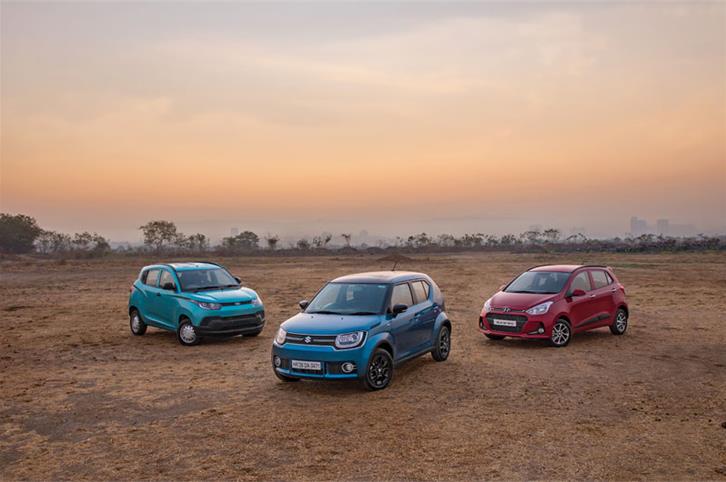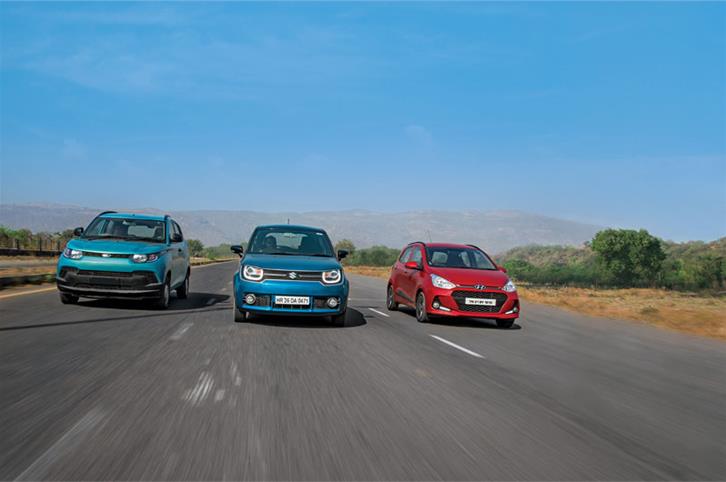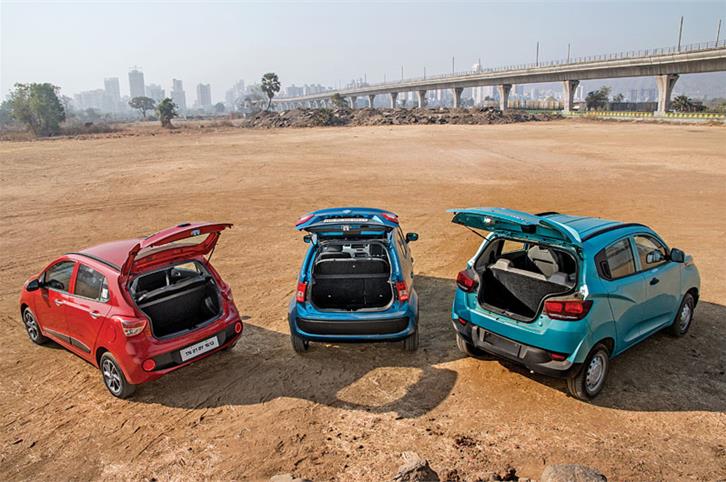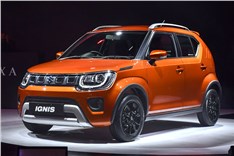Maruti Ignis vs Grand i10 vs KUV 100 diesel comparison
Maruti's hatchback for millennials, the Ignis, takes on Mahindra's young KUV100 and Hyundai's Grand i10 that looks youthful thanks to an update.
Published on Mar 15, 2017 11:51:00 AM
31,055 Views
Follow us on


Grand i10 and Ignis have large and easy-to-access boots. KUV’s narrow boot opening is inconvenient.

The Ignis is quick but you have to wait for the turbo to kick in at 2,000rpm to get to the meat of the powerband.
Feature proof
Before getting into the comfort features these cars come with, it’s essential to talk safety first. Maruti is commendably the most generous in this department with dual airbags, anti-lock brakes and ISOFIX child seat mounts offered as standard across the range. In comparison, all versions of the KUV100 get ABS, while only the top-spec K8 gets front airbags and ISOFIX seat mounts as standard. At least, Mahindra offers dual airbags as part of a Rs 22,000 ‘+’ package on lower trims. Hyundai doesn’t give similar flexibility to buyers. Base Grand i10s get a driver-side airbag and mid-spec Sportz trim upwards there’s one for the front passenger too, but what’s really disappointing is that ABS is reserved only for the top-spec Asta version of the car.
Of the other features of note, alloy wheels, daytime running lights, rear wiper and defogger, reverse sensors, tilt adjust for the steering and steering-mounted audio controls are common to the top-spec versions of all three cars. The KUV stands out by offering auto start-stop (aka Micro Hybrid tech) and selectable drive modes, but it is also the only one here without auto climate control, a reverse camera and a touchscreen infotainment system. The Ignis and Grand i10’s touchscreen units handily come bundled with sat-nav, Android Auto and Apple CarPlay, but where the Maruti screen is better in terms of readability, the Hyundai’s unit is more responsive to touch inputs. Also, as mentioned, the Grand i10 is the only car here with a rear air con vent.

Pot luck
See the spec sheets and you’ll know this is a competition of small cars with small diesel engines. Like all Marutis from the past decade, the Ignis too uses a Fiat-sourced, four-cylinder, 1.3 diesel, albeit in fixed geometry turbo form that makes 74hp and 190Nm. Mahindra’s indigenously developed mFalcon D75 diesel is the source of power in the KUV100. This three-cylinder, 1.2-litre engine makes 77hp and 190Nm. Sitting between the other two engines on the power scale is the Grand i10 with its 75hp and 190Nm. Interestingly, the Grand i10’s power and torque figures are now up by 4hp and 30Nm, courtesy a revised (read enlarged) engine under the bonnet. Engine displacement has been increased from 1,120cc to 1,186cc but the real performance gains come from a remapped Engine Control Unit (ECU) whilst a new alternator management system claims an improvement in fuel efficiency. Also note, the Ignis is a good 100kg-plus lighter than the Grand i10 and about 160kg lighter than the KUV100. These are the specs on paper, but what are they like to drive?

If you’ve driven one diesel Maruti, you’ve driven them all. The Ignis carries forward the key traits of the engine it hosts. That is to say, there’s a distinct clatter at idle, noise levels are high through much of the rev range (it’s the loudest at max revs) and power only comes in earnest at about 2,000rpm when the turbo wakes up. There is a healthy dose of power between 2,000-4,000rpm but the engine doesn’t provide the same top-end zing on the Ignis as it does on a Swift and Swift Dzire, and that’s a bit of a downer. In the lower half of the rev range, you’ll also note the marked difference in performance on and off turbo boost. The numbers reflect the same. For instance, the Ignis is the quickest car from 20-80kph in third gear but, without sufficient assistance from the turbo, it is also the slowest from 30-50kph in third.
Diametrically opposite in character is the KUV100’s engine. There’s minimal turbo lag and the engine pulls well from about 1,500rpm but there’s also no step up in power at any point. This is not an engine that rewards you for revving it hard, rather it’s one that works best on small throttle inputs and early upshifts. In that sense, the KUV100 works well in urban settings. Adding to the experience is the joystick-like gear lever that offers slick and precise shifts. If only the clutch was a bit more progressive. Top-spec KUV diesels also get an efficiency-enhancing ‘Eco’ driving mode. Performance takes a big hit but in rush-hour traffic where speeds are low, the Eco mode provides a clever way of saving fuel. Whatever mode you may be in, though, there’s no escaping the thrummy three-cylinder engine’s relatively high noise levels. The KUV has the loudest idle (albeit it’s the quietest at max revs at a standstill) and is also the noisiest at 50kph in fourth gear and 80kph in fifth gear.
Copyright (c) Autocar India. All rights reserved.






Comments
Member Login
Personal Details
No comments yet. Be the first to comment.